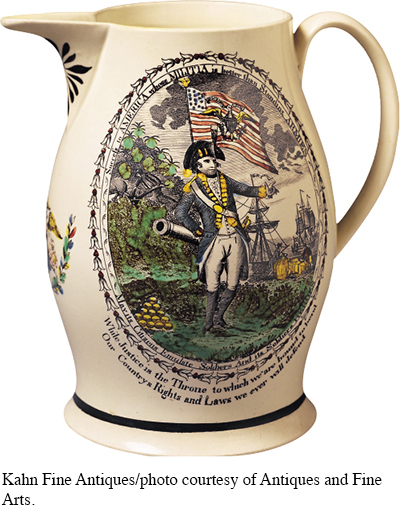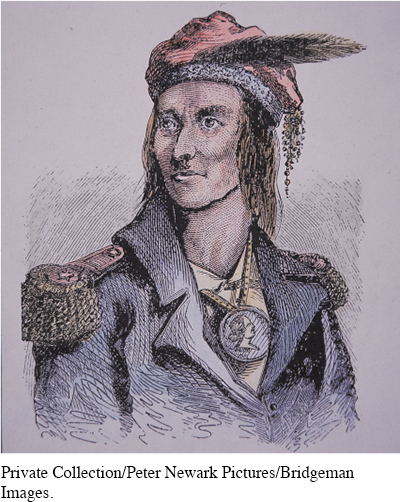The American Promise: Printed Page 253
The American Promise, Value Edition: Printed Page 233
The American Promise: A Concise History: Printed Page 264
Introduction to Chapter 10
10
Republicans in Power
1800–
The American Promise: Printed Page 253
The American Promise, Value Edition: Printed Page 233
The American Promise: A Concise History: Printed Page 264
Page 253
CONTENT LEARNING OBJECTIVES
After reading and studying this chapter, you should be able to:
Explain Thomas Jefferson’s vision for the United States. Understand how the election of 1800 might be considered a “revolution.” Identify the challenges and opportunities that Thomas Jefferson faced once in office.
Explore the challenges and opportunities that James Madison faced once in office.
Understand why the United States declared war on Britain in 1812 and identify the major turning points of the war.
Recognize how the status of white women changed in the early Republic.
Define the Missouri Compromise and its implications for the future direction of the country.
THE NAME TECUMSEH TRANSLATES AS “SHOOTING STAR,” A fitting name for the Shawnee chief who reached meteoric heights of fame among Indians during Thomas Jefferson’s presidency. From Canada to Georgia, Tecumseh was by all accounts a charismatic leader. Graceful, eloquent, compelling, astute: Tecumseh was all these and more, a gifted natural commander, equal parts politician and warrior.
The Ohio Country, where Tecumseh was born in 1768, was home to some dozen Indian tribes. During the Revolutionary War, the region became a battleground, and Tecumseh lost his father and two brothers to American fighters. The Revolution’s end in 1783 brought no peace to Indian country. The youthful Tecumseh fought at the battle of Fallen Timbers, a major Indian defeat, and stood by as eight treaties ceded much of Ohio to the Americans between 1795 and 1805.
Some resigned Indians looked for ways to accommodate, taking up farming, trade, and intermarriage with white settlers. Others spent their treaty payments on alcohol. Tecumseh’s younger brother Tenskwatawa led an embittered life of idleness and drink. But Tecumseh rejected accommodation and instead campaigned for a return to ancient ways. Donning traditional animal-
The American Promise: Printed Page 253
The American Promise, Value Edition: Printed Page 233
The American Promise: A Concise History: Printed Page 264
Page 254Even Tecumseh’s dissolute brother was born anew. After a near-

President Thomas Jefferson worried about an organized Indian confederacy and its potential for a renewed alliance with the British in Canada. Those worries became a reality during Jefferson’s second term in office (1805–
In the end, the War of 1812 settled little between the United States and Britain, but it was tragically conclusive for the Indians. Eight hundred warriors led by Tecumseh helped defend Canada against U.S. attacks, but the British did not reciprocate when the Indians were under threat. Tecumseh died on a Canadian battlefield in the fall of 1813. No Indian leader with his star power would emerge again east of the Mississippi.
Tecumseh’s briefly unified Indian confederacy had no counterpart in the young Republic’s confederation of states, where widespread unity behind a single leader proved impossible to achieve. Republicans did battle with Federalists during the Jefferson and Madison administrations, but then Federalists doomed their party by opposing the War of 1812. The next two presidents, James Monroe and John Quincy Adams, congratulated themselves on the Federalists’ demise and Republican unity, but in fact divisions within their own party were extensive. Wives of politicians increasingly inserted themselves into this dissonant mix, managing their husbands’ politicking and enabling them to appear above the fray and maintain the fiction of a nonpartisan state. That it was a fiction became sharply apparent in the most serious political crisis of this period, the Missouri Compromise of 1820.
CHRONOLOGY
| 1800 |
|
| 1801 |
|
| 1803 |
|
| 1804 |
|
| 1804– |
|
| 1805 |
|
| 1807 |
|
| 1808 |
|
| 1809 |
|
| 1811 |
|
| 1812 |
|
| 1813 |
|
| 1814 |
|
| 1815 |
|
| 1816 |
|
| 1819 |
|
| 1820 |
|
| 1823 |
|
| 1825 |
|